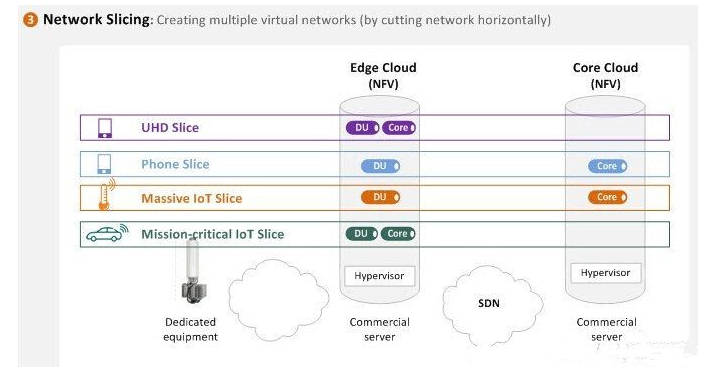In today’s digital age, we rely heavily on the internet and cloud computing for our daily activities. From streaming our favorite TV shows to conducting business transactions, the internet serves as the backbone of our digitalized world. However, the increasing number of users has led to network congestion and slowed internet speeds. The solution to this problem lies in Fixed Network Slicing.
Fixed Network Slicing is a new technology that refers to the concept of partitioning a fixed network infrastructure into multiple virtual slices, each tailored to meet the specific requirements of different services or applications. It is an extension of the network slicing concept initially introduced in the context of 5G mobile networks.
Network Slicing allows network operators to create logically independent and isolated network instances within a shared physical network infrastructure. Each network slice can be customized with specific performance characteristics, resource allocation, and Quality-of-Service (QoS) parameters to meet the unique demands of different services or customer groups.
In the context of fixed networks, such as broadband access networks or data center networks, network slicing can enable efficient resource utilization, improved service delivery, and better network management. By allocating dedicated virtual slices to different services or applications, operators can ensure optimal performance, security, and reliability for each slice while maximizing the utilization of network resources.
Fixed Network Slicing Technology can be particularly beneficial in scenarios where diverse services with varying requirements coexist on a shared infrastructure. For example, it can enable the coexistence of services like ultra-low latency applications for real-time communication, high-bandwidth services like video streaming, and mission-critical applications that require high reliability and security.
It's worth noting that network slicing technology is continuously evolving, and new developments may have emerged since my knowledge cutoff date. Therefore, for the most up-to-date and detailed information, I recommend consulting recent research papers, industry publications, or contacting experts in the field.
Mylinking specializes in Network Traffic Visibility, Network Data Visibility, and Network Packet Visibility to Capture, Replicate and Aggregate the Inline or Out-of-band Network Data Traffic without packet loss and deliver the right packet to the right tools like IDS, APM, NPM, Network Monitoring and Analysis System. This technology plays a vital role in the development and optimization of Fixed Network Slicing.
A significant advantage of fixed network slicing is its ability to increase network utilization, allowing service providers to offer new revenue-generating services. For instance, service providers can create customized services or packages for specific customer segments, such as IoT devices, smart homes, and business applications.
Huawei has introduced Network Slicing Technology designed to open a single fibre deployment to customer's premises for multiple users. This technology is being trialed in Turkey, and it is set to revolutionize the telecommunications industry by boosting network speeds, improving QoS, and optimizing resource utilization.
In conclusion, Fixed Network Slicing is the future of the Telecommunications Industry. As more people rely on the internet for various activities, fixed network slicing technology provides a scalable, flexible, and reliable solution to growing network congestion. With MyLinking’s expertise in network traffic visibility, network data visibility, and network packet visibility, service providers can monitor, control, and optimize network performance, delivering a better user experience to customers. The future is indeed bright for the telecommunications industry, and fixed network slicing technologies will play a significant role in its growth and development.
Post time: Jan-29-2024





